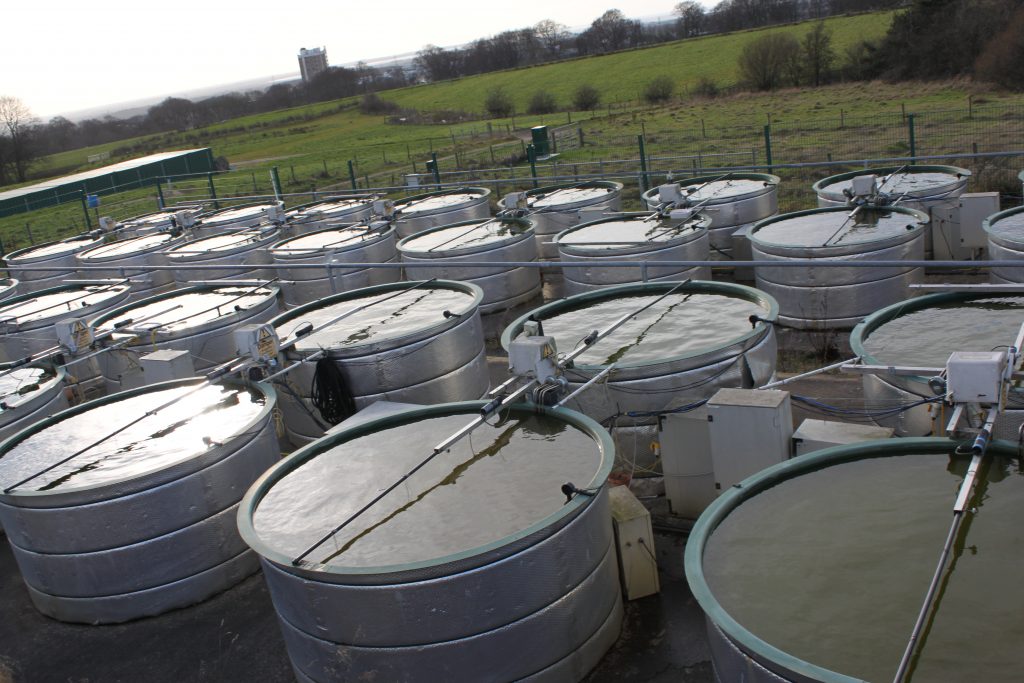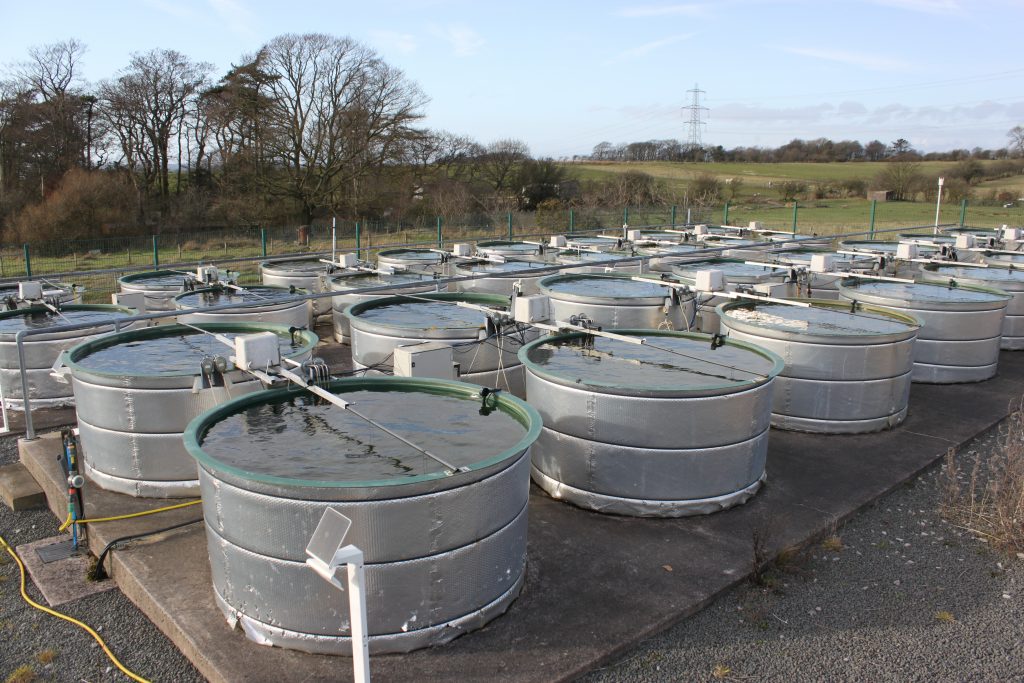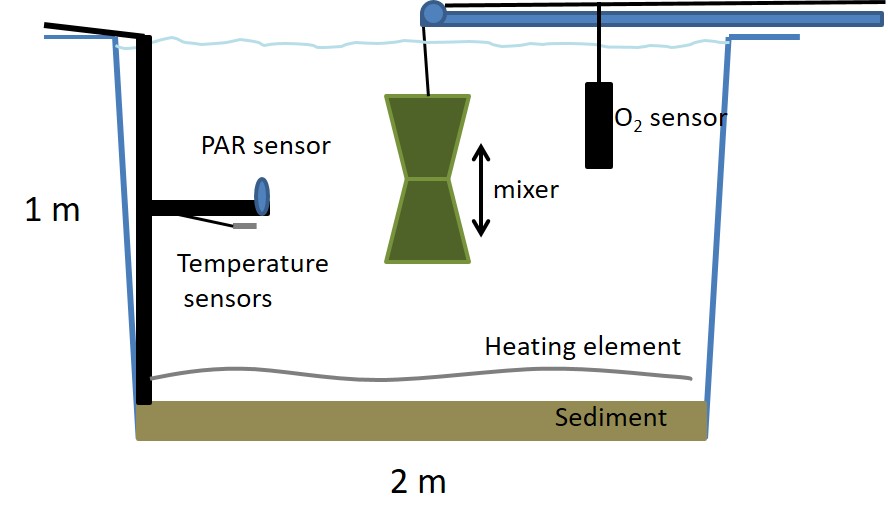Centre for Ecology & Hydrology (CEH)
Lancaster University
Library Avenue
Lancaster
LA1 4AP
UK
Dr Heidrun Feuchtmayr
Please login or request access to view contact information.
Outdoor – pelagic/benthic – freshwater
32 cylindrical insulated fibreglass outdoor mesocosms, each 1.0 m deep and 2.0 m in diameter (3000 L) arranged in four rows with eight mesocosms in each and 3 fibreglass tanks 1.0 m deep and 4.0 m in diameter (12000 L). The site was built in 2011 and is located around 2 miles from the CEH office.
Depending on each individual experiment. So far:
- temperature
- nutrients
- precipitation (flushing)
- organic carbon
The site has been used for various climate change experiments so far, focussing on the effect of
- brownification on freshwater communities
- multiple stressors
- warming
- eutrophication
- extreme rainfall events.
Electric heating elements are placed in each mesocosm to allow for climate warming experiments. Water temperature in warmed mesocosms can be increased by up to 5 degrees C above the ambient water temperatures, controlled by a custom computer program. To prevent thermal stratification, purpose-built mixers suspended in the middle of the mesocosm, can be moved slowly up and down through the water column. The mixers are controlled by data loggers and can be operated on different mixing regimes. All mesocosms are equipped with automatic sensors measuring temperature, dissolved oxygen and photosynthetically active radiation (PAR) every 5 minutes. A weather station within the mesocosm compound measures wind speed, wind direction, precipitation, air temperature, barometric pressure and relative humidity, logged at five minute intervals. All data is logged by a data logger and directly transferred to a server.
Lancaster University B&B
 |
 |
 |
